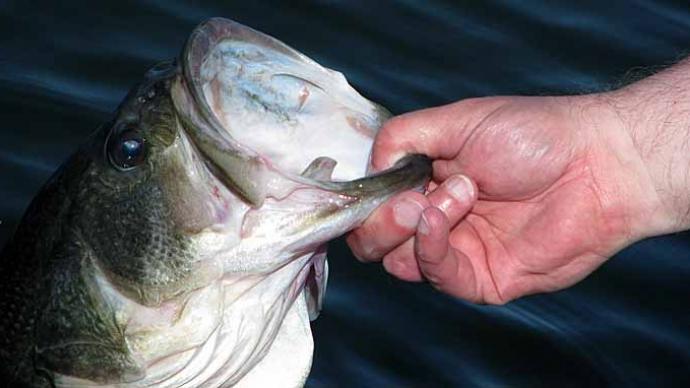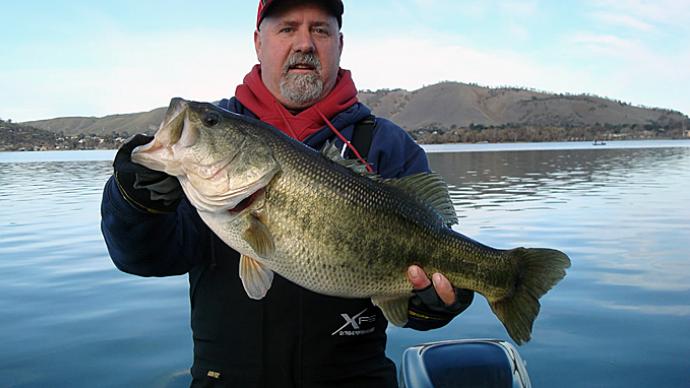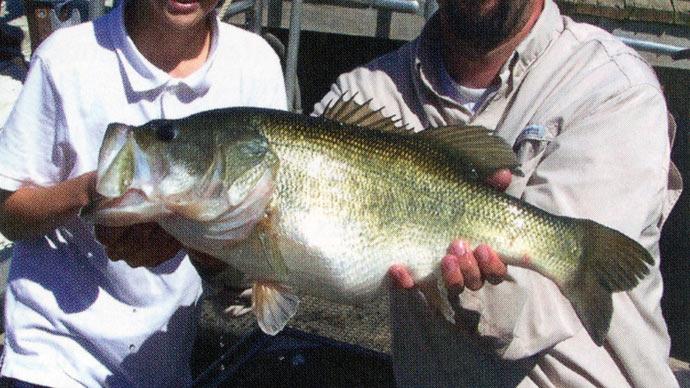
All bass have one thing in common: their daily live's simple format. In general, the place you located fish on your last trip to the lake may not hold fish that day, at that time, but certainly whatever is there that makes them return will continue to do so even over the years.
My belief for years has been that bass live in three layers. Fish live in shallow water practically year-round, bass live in what I call a mid-layer, and bass live in deep water almost year-round. This is not to say that these fish never cross paths, only that their preferred habitat is defined by those basics (shallow, middle, deep). Just as some people prefer to live in the country, and some prefer towns, these fish seek areas where their specific needs are met.
This is why some anglers find catching big bass difficult. It's very likely that you are not fishing where big bass are moving or holding. Locating their "trail" is the key to eventually catching one. But how to do this is not necessarily by fishing the regular way you fish, in the regular holes you fish each time you return to the lake. If you have not caught a large bass, chances are you are not fishing in the right area at the right time - which is what it takes to catch a giant largemouth.
In general, smaller fish are far more affected by water and weather changes than large ones because they reside in shallow water, where water temperatures change first and most dramatically. Larger fish living in deeper zones will not be affected by water temperature and weather changes until the change reaches their area. This can be longer than what it takes to do so in shallower water.
Larger bass will sometimes move into shallows to feed, and this is, of course, an excellent time to catch them. They will also move into shallower areas sometimes for spawns, but there are fish that spawn in deeper water as well. So finding the best trail is how you can catch a trophy. But that's only the beginning, as you also must use the proper lure and be there at the right time. In other words, everything must come together for the result to be successful.
In our years of tracking bass, we caught fish at different times but rarely at depths or in areas they usually did not frequent. In other words, a mid-layer fish would be in depths that ranged from eight to 12 feet. It might be a 200-yard-long stretch for the fish to move in daily, but the general water depth remained relatively constant. The path might be a creek or a tree line, but there would always be something structural or some cover that allowed the fish to move and feel protected.
I have always preached fishing parallel to the structure and cover. The basic premise you must understand is that the fish won't just swim off in any direction away from such things. They will follow their accustomed paths, which give them security and knowledge to lead to food or resting areas. It's just that simple. Find the path, and you will find the bass. In every lake report and feature article in this magazine and others, you read about fishing creek channels, drops, etc. The reason is that fish use these structures for their daily movements. If you point your boat parallel to the shore and cast straight to the bank, you have narrowed your catching field. But if you position your boat over a creek channel and cast the length of it parallel, you have widened your chances immensely. At some point during the day, fish will move parallel to the structure upon which you are fishing.
While some weather conditions will affect this scenario, most won't cause a severe change in the habits of the bass in an area. However, the feeding periods may change slightly, or feeding may slow down until the weather becomes stable. This can be related to the time of day as fish may bite at 7:00 a.m. on your favorite hole one day, but the next week it's 9:00 before you get a strike. Something affected the time at which the fish were feeding. That could be a cold front or high pressure. But when feeding patterns change, it does not last long until it changes back. The fish will always revert to their particular patterns of feeding. Feeding times generally are stable because if a bass eats at a specific time, it will be hungry again at a particular time, simply the same as us. You eat breakfast, and then you'll be hungry again by lunch.
Using your electronics and maps to locate potential big-bass areas is not that hard. Look for structure lines that are possible trails and fish them. The next time you go to the lake, don't just hug the shore all day and fish straight to the bank. Instead, line your casts parallel to the underwater structure, increasing your chances of success. Try fishing water that's a little deeper than you usually fish. Indeed, this doesn't mean you can't catch a 12-pound bass in a foot of water, but most of the larger bass I've caught over the years have come from mid- to deeper water.




